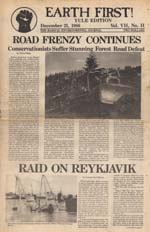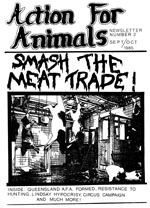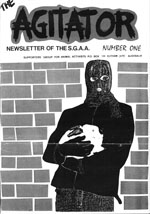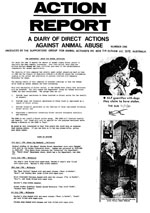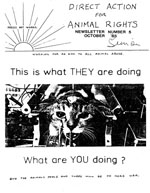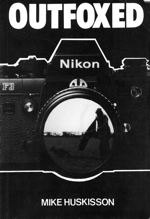Breaking Barriers
Breaking Barriers (1986. Washington, D.C.)
While it is true that direct action is often the best means to accomplish our goals, the way we conduct those actions can be an impediment to long term change. Early militants in the animal liberation movement were inspired by the aesthetics of groups like The Angry Brigade, and we have been saddled with that sort of ski-mask and army jacket imagery ever since. The problem is this: that appearance is heavily associated with anti-social behavior, crime, and random violence. While we may romanticize the bolt cutters and balaclavas, the general public does not. If our fashion sense harms the propaganda and recruitment value of our actions, than perhaps we need a makeover.
There have been efforts to part with the bank-robber-meets-gun-nut costumes, however. One of the most dramatic involved a spectacular raid, and… um… mime masks. This attempt at softening the imagery of underground activism was carried out by the aptly named “True Friends.” The video below, Breaking Barriers, was produced by PeTA in their more radical days, and acted to publicize the liberation of four baby chimpanzees from isolation chambers at the SEMA lab in Rockville, MD. While the effectiveness of their eerie masks and wigs is questionable, the beauty of these young primates being freed from a life of torture is not. This was a notable raid that garnered considerable public sympathy when it occurred, and just because the attempt at re-inventing our look failed in this instance doesn’t mean we shouldn’t keep trying.


